Dogs love to run, play, and explore the world without the hindrance of a leash. However, letting your dog off the leash can be dangerous for your dog and disrespectful to your community. In general, it is not recommended to let your dog off the leash unless you are in an enclosed area.
Your dog must be properly trained to behave well and stay right by your side or under your voice control at all times when it is off the leash. If your dog is in excellent health, is even-tempered, has a minimal prey drive, has never shown signs of aggression, and does not have “wanderlust,” then there is a possibility that you can trust it off the leash in certain circumstances. In order for it to go smoothly, there are a number of training steps you need to take prior to giving it this freedom.
Consider the Risks
Before letting your dog off the leash, you need to consider several factors that may jeopardize its safety and that of others around you. For instance, many cities and towns have leash laws in place to keep everyone safe. If you choose to break the law, be prepared for fines and citations at the very least.
Additionally, keep in mind that even the most well-trained dog can get distracted. A loose dog may see another dog or a prey animal and run after it out of sheer instinct. Some dogs may become spooked by a loud noise and run off in fear. Once your dog is out of your sight, even if only for a moment, it is in potential danger or may end up causing trouble. Dogs can get lost, be hit by a car, ingest a toxin, get in a dogfight, be attacked by a wild animal, or cause property damage, among many other things.
It's also important to remember that some people are afraid of dogs or may not particularly like them. At the very least, letting your dog off-leash may seem rude and annoy people. In the worst-case scenario, your dog may nip or bite someone, including children who may approach it with innocent intentions. Even if your dog remains right by your side, other people may become nervous or afraid. Some dogs can even sense this fear and may react unexpectedly.
Train Basic Commands
There is no way to guarantee your dog’s safety if you choose to let it off the leash. However, advanced training can help decrease the chances of your dog getting in harm's way. Your dog can enjoy running free and exploring its environment but it must understand the rules. It's critical that your off-leash dog either stays right by your side or can easily be called to your side.
Begin by establishing a solid foundation of obedience training. Clicker training is an excellent way to train any dog, but it can be especially valuable if you plan to eventually let your dog off the leash.
Your dog should have a mastery of basic commands:
- Loose leash walking
- Heel (both on and off the leash)
- A reliable recall
- A reliable emergency recall
- Leave it
- Drop it
- Look (watch me)
- Stay
- Go to its place
Add Value to Staying Close
Next, your dog must learn that it is highly valuable to stay close to you, whether that's through praise or treats. It is in any dog's nature to wander and explore their world and their curious nose can lead to danger. If your dog stays close and can be trusted to obey recall commands, you can let it run within your sight.
Practice 'Look'
Your dog should also learn to value you above any distractions. Ideally, you will teach your dog to look at you (and to check in with you) any time a distraction comes along. Practicing the "look" command while your dog is on the leash around a lot of distractions will help out tremendously.
Additionally, you should always try to reward your dog for checking in on its own, whether it looks at you or actually comes over to you. If you use clicker training, try to capture the desired behaviors.
Keep Challenging Your Dog
Regularly practice training commands with your dog off-leash in an enclosed area. Gradually add more distractions. Practice "look" off the leash and keep rewarding natural check-ins. When you are confident that your dog is ready, try letting your dog off-leash in the safest area possible for short periods of time.
Look for an open area that has some kind of natural boundaries, like water or houses. Make sure you are not close to a street with high traffic. Carry high-value treats or another high-value reward and offer lots of praise whenever your dog shows good behavior.
Problems and Proofing Behavior
Letting your dog off-leash requires more thorough proofing of the behavior than most obedience commands. As your dog becomes more comfortable and well-behaved off-leash, work your way up to more challenging environments. Your dog should always follow your direction no matter the situation or distraction. For your dog's safety, it is never recommended to let your dog off-leash in crowded public areas or around traffic, regardless of the leash laws in that area.
Don't push your dog's limits or become too trusting or comfortable. Watch your dog's body language for any signs that things may go bad and always carry the leash with you.
Make sure you understand your dog's tendencies as well. Some dogs will never be able to resist certain distractions, especially dogs with high prey drives. Some tendencies put a dog at high risk for danger when off the leash:
- Squirrel chaser: This includes other small animals like rabbits and cats.
- Car-chaser: Heelers and other chasing dogs can either be hit by cars or cause a car accident.
- Noise-phobic: Some dogs are afraid of thunder, fireworks, a car backfiring, etc., which may cause them to run off out of fright.
- Reactive or hyperactive around other dogs: Dogs who either show aggression or get too excited when other dogs are near can get into dog fights.
- Wanderlust: Some dogs simply want to explore too much and may run away while completely ignoring anything you say or do.
Training can help minimize some tendencies, but rarely will they completely vanish. If you know your dog cannot resist a response to certain stimuli, then you must understand the risks when it is off-leash. If you have any doubts, it's best to keep the leash. You can, however, consider a long lead to give your dog space to explore or take it to fenced-in areas where it can safely play off-leash. Remember, it's always best to put safety first.

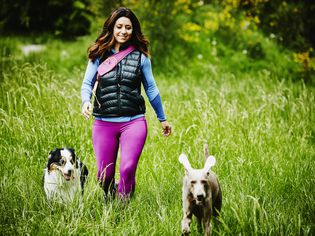
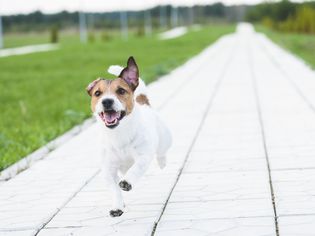
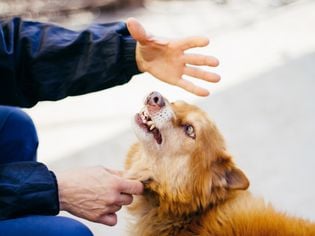

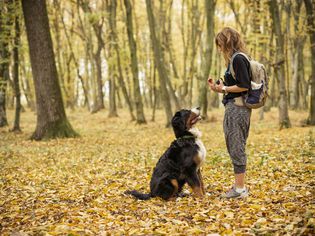

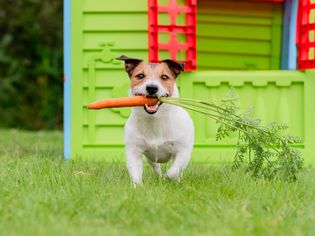


Comments on " How to Train Your Dog to Walk Off the Leash" :